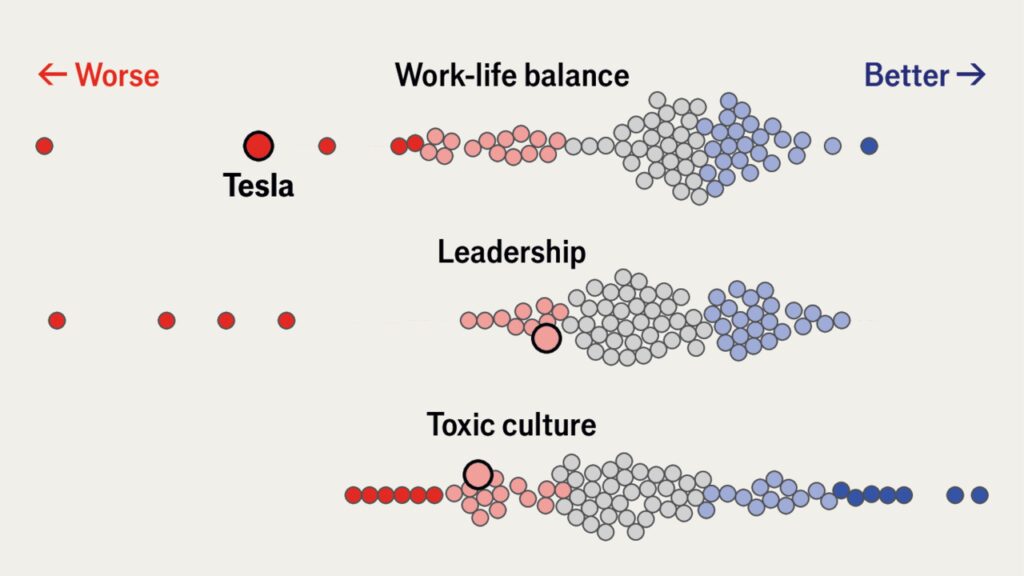Glassdoor employee reviews
bOsses loves to talk about corporate culture. But the concept is fuzzy. Economists have partnered with research and AI company CultureX to measure the corporate culture of 900 companies in 19 industries. CultureX data shows that while companies are often said to have a “good” or “bad” culture, there are many aspects to the concept. This means that companies can succeed in cultivating some aspects of their culture, and failing others.
To measure corporate culture, CultureX starts by compiling anonymous reviews submitted by employees to Glassdoor, a workplace review website. This project focused on what was written between January 2023 and April 2025. GlassDoor allows users to assess employers in several measures, including “culture and values,” but CultureX analyzes the freeform responses employees submit in reviews that describe the pros and cons of working for the company in their own words.
To organize the information in these reviews, CultureX uses a custom built natural language processing model to categorize text into over 200 culture-related topics. These topics are categorized into themes that are deemed important to corporate culture by the academic literature. The project focused on nine topics: leadership, support, toxicity, work-life balance, agility, Kandor, innovation, strategy, and transparency.
Themes like “leadership”, “innovation”, “strategy”, and “work-life balance” are relatively simple, but the other themes are more subtle. “Support” measures whether an employee feels that their boss cares about them. “Toxicity” measures the degree to which rude behavior is tolerated. Agility measures a company’s ability to respond to market changes. “Candor” quantifies how employees express their opinions and concerns. Transparency also assesses how well information is shared among employees.
Excellent leadership benefits most other areas of the company culture
CultureX benchmarks different companies against industry peers to calculate how often employees from different companies talk about these topics and positively for each subject, and to derive scores used in this interactive. Each reported value represents the number of standard deviations with firm scores above or below the industry average for a given cultural theme. The first interactive chart shows how a company’s rating compares to other companies in the industry’s ratings on agility, leadership, toxicity and work-life balance. The second chart shows that companies with high leadership scores also tend to do well with other measures.
There is a risk to conduct research using user-generated content. To ensure that reviews are not entirely written by users with a very positive or very negative view, Glassdoor must submit information about their employer before accessing reviews on the site. Those who choose to post about their employers are permitted to do so once a year. These rules help to ensure that reviews are less polarized and more representative.
To combat fraud, GlassDoor uses machine learning algorithms to identify suspicious activities such as multiple submissions from the same IP address or generic, repetitive language. Reviews considered to be the product of compensation or enforcement will be removed. CultureX then runs its own set of robustness checks to identify companies that inflate their ratings by encouraging positive reviews or posting fraudulent reviews. In this analysis, 5% of companies were removed from the sample due to such concerns.
According to Don Sull, co-founder of CultureX and Professor at the Massachusetts Institute of Technology, the goal of this type of analysis is not to encourage companies to adopt a single, homogenous culture, but to understand the cultural attributes workers and managers care about, for example, to help workers.■
Source link

